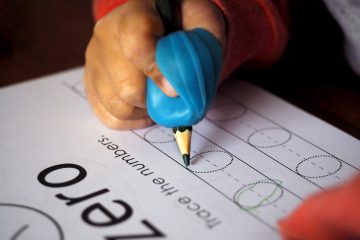 Summer is a great time to take an honest look at your child’s reading progress in school and determine if an intervention is needed before the new school year begins. Here’s the last of the Reading Essentials Series…..
Summer is a great time to take an honest look at your child’s reading progress in school and determine if an intervention is needed before the new school year begins. Here’s the last of the Reading Essentials Series…..
As your child learns to read, you may have concerns about whether or not he or she is progressing at a normal rate. After all, you’ve been comparing developmental notes with other parents since your child was rolling over and beginning to crawl, right?
Although every child is different, if your child follows an “average” developmental path, there are a few milestones of reading progression that you can expect to observe in the early grade school years. Remember, though, every child’s path is unique! Milestones are just a general marker of where a child will most likely demonstrate particular skills and abilities.
Kindergarten:
Children will be learning to read independently. They will most likely know all their letters and most letter-sounds, be able to segment, blend, and manipulate phonemes, and will be identifying some sight words. Some children will be reading text at the end of this first year of school.
First and Second Grade:
Independent reading skills progress. Children engage in more sight and whole word identification, and vocabulary increases. Children are able to sound out longer words, or guess meanings from context if words are phonetically irregular. Writing ability expands to complete sentences, including some punctuation.
Third Grade:
Third grade is traditionally the time when children make the switch from “learning to read” to “reading to learn.” Most reading fundamentals are in place at this point, so that children can begin reading more challenging material.
Note! Even when your child reaches an independent reading level, you should maintain your support of his or her continuing development. Keep reading to or with your child, retaining a reading tradition that is emotionally significant for both you and your child. Continue to express and model the importance of reading in your home environment, demonstrate an interest in your child’s homework, and ensure that he or she has the tools to complete assignments with full understanding and a sense of accomplishment. Don’t make the mistake of thinking your child is “done” with learning to read once he or she has the basics down!
4th Grade and 5th Grade
In fourth and fifth grade, children are reading more challenging texts with fluency. They can identify different parts of a word such as the root word, prefix, and suffix, and use this information to decode the meanings of unfamiliar words. They will also learn to re-read when necessary to support their comprehension of text.
6th Grade
By 6th grade, students are expected to have mastered the fundamentals of reading. Teachers spend less time with reading instruction, and students are responsible for gleaning information from reading materials independently. Students are also able to summarize texts, identify the main idea, and locate textual evidence to support an idea or theory about a text.
You can learn more about grade-level expectations for reading by visiting the Common Core State Standards website.
If you feel that your child is falling behind grade-level reading expectations, it’s important to address these concerns sooner rather than later. Early intervention (with a program like Red Apple Reading perhaps!) is key to reversing reading difficulties and ensuring that your child is fully equipped to excel in reading, as well as other subjects which require reading fluency and comprehension (which is all of them!). And summer is a great time to begin these interventions.


